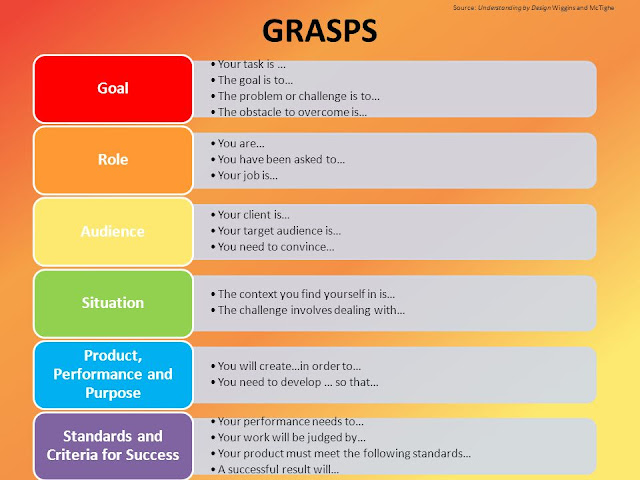During my work as a principal, I wanted to transform the learning culture of my school. For so long my students, like many others across the world, just did school. Learning, or at least what we referred to it as was more or less a monotonous task consisting of the same types of activities and assessments that occurred over and over again. We weren't consistently getting our students to think deeply or authentically apply what they had learned. Getting in classrooms more, taking a critical lens to our work, and working towards a Return on Instruction (ROI) helped us take the needed steps to raise the learning bar while expecting more from our students. We began by improving the level of questioning across the board. From there, our focus was on the development of performance tasks that took into account objectives, learning targets, and curriculum alignment.
Performance tasks afford students an opportunity to actively apply what they have learned and create a product to demonstrate conceptual mastery aligned to standards. Jay McTighe describes performance tasks as follows:
A performance task is any learning activity or assessment that asks students to perform to demonstrate their knowledge, understanding, and proficiency. Performance tasks yield a tangible product or performance that serve as evidence of learning. Unlike a selected-response item (e.g., multiple-choice or matching) that asks students to select from given alternatives, a performance task presents a situation that calls for learners to apply their learning in context.Learning in highly successful schools enables students to know what to do when they don't know what to do. This is also referred to as cognitive flexibility, the mental ability to switch between thinking about two different concepts and to think about multiple ideas simultaneously. To gain that competence, students need to acquire depth of knowledge and a rich set of skills and then be taught how to apply their skills/knowledge to unpredictable situations in the world beyond school. This is critical if we are to prepare students for the new world of work adequately.
By using the Rigor Relevance Framework as a guide, educators can begin to develop performance tasks that push learners to show that they understand while applying what has been learned in relevant contexts. McTighe identifies seven characteristics to consider during development:
- Performance tasks call for the application of knowledge and skills, not just recall or recognition.
- Performance tasks are open-ended and typically do not yield a single, correct answer.
- Performance tasks establish novel and authentic contexts for performance.
- Performance tasks provide evidence of understanding via transfer.
- Performance tasks are multi-faceted.
- Performance tasks can integrate two or more subjects as well as 21st-century skills.
- Performances on open-ended tasks are evaluated with established criteria and rubrics.
The GRASPS model (Wiggins & McTighe, 2004) can greatly assist educators in the construction of quality performance tasks. The GRASP acronym stands for the following: Goals, Role, Audience, Situation, Products or Performances, and Standards.
It is important to remember that the two critical elements in any quality performance task is evidence of learning and relevant application. As we began progressing through our digital transformation at New Milford High School, technology became a vital component of performance tasks. To see some examples, take a look at this post.
The Independent OpenCourseWare Study (IOCS) that we created is another excellent example. It allowed students to fully utilize OCW to pursue learning that focused on their passions, interests, and career aspirations. They could select offerings from such schools as the MIT Harvard, Yale, University of California at Berkeley, and Stanford, applying their learning to earn high school credit. Students combined their creativity with their newfound knowledge to synthesize a unique product that demonstrated and implemented the new knowledge and skills they gained from the OCW. The aim was for students to produce an actual product, whether it was the demonstration of a new skill, the creation of a physical model, the designing and conducting of an experiment, the formulation of a theory, or some other creative way to show what they've learned.
If it's easy, then it probably isn't learning. Performance tasks push students to think more deeply about their learning while developing a greater sense of relevance beyond the classroom.
Wiggins, G., & McTighe, J. (2004). Understanding by Design Professional Development Workbook. Association for Supervision and Curriculum Development: Alexandria, VA.

You need to be a member of School Leadership 2.0 to add comments!
Join School Leadership 2.0